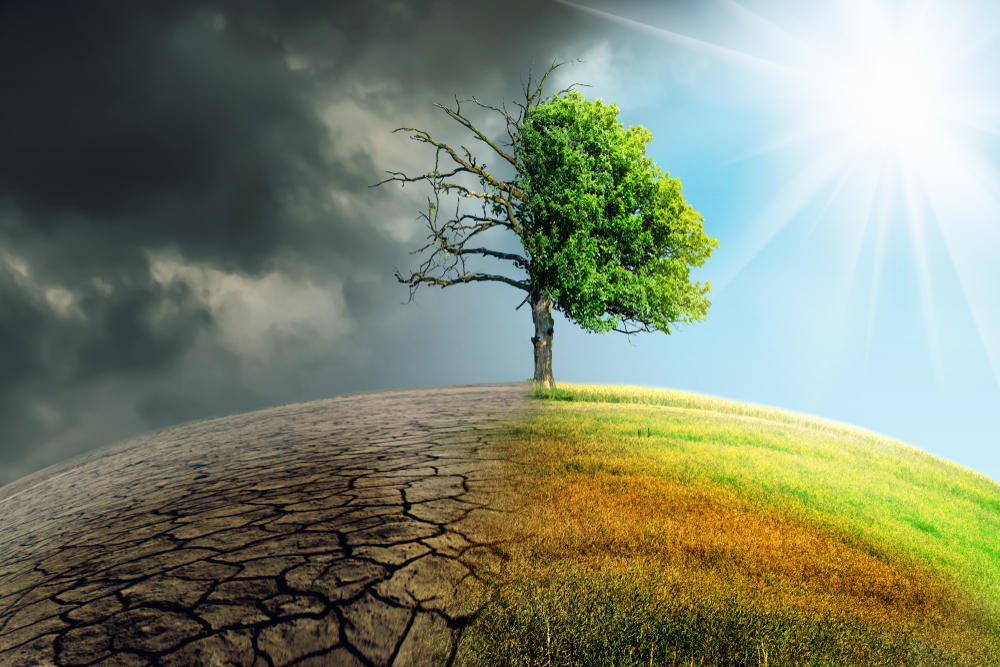As climate change advances, it has amplified a variety of diseases globally, especially in under-resourced countries and communities. This article summarizes three of these consequential trends. The first is that wildfires and industrial pollution are worsening respiratory diseases. Second, hotter climates are increasing the incidence of infectious diseases such as malaria, and lastly, heat waves are increasing the risk of various diseases, disrupting public services, and causing unprecedented amounts of heat-related fatalities.
Climate change has increased the prevalence of wildfires globally. These fires not only devastate local communities and ecosystems but also create smoke that harms people who live in different countries. For example, “In one fire alone, wildfire pollutants reached people in North Dakota, South Dakota, Minnesota and Iowa from flames in northern Canada” (American Lung Association (ALA)). Wildfires can cause respiratory illnesses in these faraway populations, especially in pediatric patients. According to the ALA, “Studies of children in California found that children who breathed the smoky air…had more coughing, wheezing, bronchitis, colds, and were more likely to have to go to the doctor or to the hospital for respiratory causes.”
As climate change worsens, respiratory illnesses from wildfires will increase. A 2023 EPA report found that “new cases of asthma attributable to climate increase by 4 percent and 11 percent at two °C and four °C of global warming, respectively.” Also, “the percent change in incidence of hay fever, school days lost, and ED visits from asthma all increase between 1 percent and 5 percent.” As time passes, climate change will put a stronger strain not only on human health but also on institutions such as schools and hospitals. The systematic effects of climate change must be addressed now.
Industrial pollution is another prominent cause of respiratory illness, and this impact falls most heavily on under-resourced countries and communities. People of middle-and-lower income countries are exposed to more air pollution and have a higher prevalence of diseases that are exacerbated by it, “like asthma,” according to the World Health Organization (WHO). For example, some populations in sub-Saharan Africa, South-East Asia, and the Western Pacific must rely on fuels they can gather, such as wood, dung, and gas stoves, which are more harmful to their health. In turn, they “experience the highest rates of health problems from exposure to indoor pollutants.” (WHO).
Climate change is also exacerbating the spread of infectious diseases worldwide. One of the most consequential infectious diseases is malaria, a mosquito-borne disease that can cause fever, nausea, vomiting, damage to the liver, kidneys, and spleen, and even death 95 percent of malaria cases are in Africa, and most of these African cases are in the continent’s hotter, geographic center where mosquitos thrive. However, effects of climate change such as “higher temperatures, increased rainfall and humidity are increasing the geographic range of mosquito vectors, which are moving outwards from the equator” (Medicines for Malaria Venture). One mosquito vector, Anopheles stephensi, has spread in the past decade to African countries such as Ethiopia, Sudan, Nigeria, and Djibouti, which has translated to a boom in malaria cases. Before A. Stephensi’s arrival in Djibouti, the country had 27 annual cases of malaria. After its arrival, the country had 73,000 cases in 2020 (Gates Foundation).
Hotter temperatures endanger health in America. Increased heat has been shown to contribute to diseases across multiple body systems: The U.S. Department of Health and Human Services (HSS) says that warmer temperatures increase the risk of “asthma and chronic obstructive pulmonary disease (COPD),” “kidney injury and blood pressure problems,” “heat exhaustion,” “heat stroke,” and “hospitalization for heart disease.” Recently in America, hotter temperatures have steadily increased the number of heat-related deaths. HSS reports that “Approximately 1,602 [heat-related deaths occurred] in 2021, 1,722 in 2022, and 2,302 in 2023.” Research also repeatedly shows that global warming’s impact on America has disproportionate effects on communities of color. Public health professionals in California studied the state’s heat waves from 1999 to 2011 and found that infant mortality rates were highest among Black infants because of preexisting health disparities.
In the past three years, unprecedented heat waves have devastated population health abroad in places such as Europe and India. Europe has reportedly been warming twice as fast as the global average, and the continent endured its hottest season in history in the summer of 2022. 61,000 heat-related deaths occurred, according to a study in the medical journal Nature, which is more than double the “25,500 summer heat-related deaths [in] the 2015–2021 period.”
In May 2024, a record-breaking heatwave hit India and caused a public health emergency in New Delhi. During the heatwave, which “kept temperatures in several Indian states well above 110 degrees for weeks,” New Delhi hospitals recorded an uptick in heatstroke cases. The heatwave also threatened Delhi’s population by disrupting public services such as fire safety and water supply. For instance, the heatwave exacerbated “deadly fires in crowded buildings.” The number of fire calls increased twenty-five percent which stretched the fire department’s resources. City officials also “feared that the…water supply might need rationing.”
Delhi officials implemented policies to mitigate the heat’s interference with public services. The lieutenant governor called for “construction workers to get ‘paid leave’ between noon and 3 p.m.” to work in safer conditions. Delhi’s water minister also imposed fines for using water for commercial purposes.
Although these policies do not address the larger issue of global warming, they offer hope that a government can respond swiftly to a climate emergency. Citizens should recognize that climate-caused public health emergencies are not a future possibility but a current reality. Anyone can share the information above and show others how climate change is harming public health. Furthermore, health professionals such as doctors and nurses can speak up and explain to lawmakers that climate change is a public health threat that must be addressed now.
Andrew Williams is a premedical student. Jennifer Romanello is an internal medicine resident.

